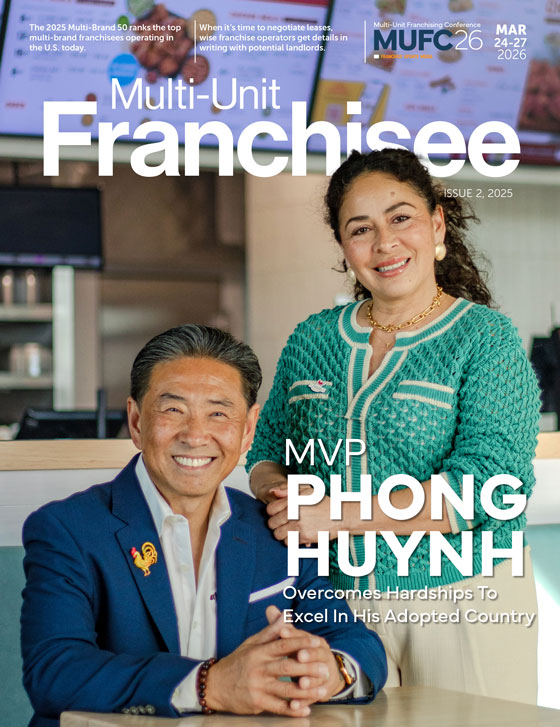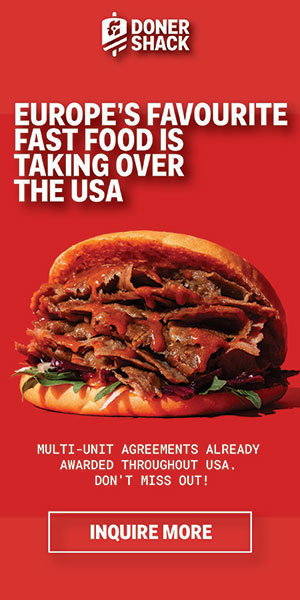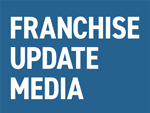Multi-Unit Turnaround Playbook: Tiny Habits Overcome Underperformance

Every operator dreams of a thriving business, but shrinking margins, disengaged employees, and declining customer satisfaction often get in the way. Many chase quick fixes: marketing tweaks, new products, and leadership shifts. The best, however, treat failure as data, not defeat.
Measure failure
Underperformance is often ignored, hidden, or blamed on externals. Top operators see failure as feedback, an opportunity to refine processes and improve. They measure it to drive progress, not just penalize mistakes.
At this year’s IFA Convention, Atomic Habits author James Clear highlighted the power of small, consistent improvements. The six-step Multi-Unit Turnaround Playbook applies those principles, giving multi-unit managers a system to assess, prioritize, and execute changes that enhance operations, engagement, and financial results.
Step 1
Assess market and unit performance, diagnose core issues with structured data collection, and identify key financial and operational gaps:
- Revenue trends. Look at sales by location over the past three years and 12 months.
- Benchmark gross profit margin. Align labor and cost of goods.
- Customer retention. Measure repeats vs. first-time visits.
- Labor productivity ratios. Examine sales per labor hour.
- Service and accuracy. Track drive-thru time, table turnover, ticket speed, complaints, and refunds.
- Employee productivity: Measure upselling and checklist completion.
Tool: Use a market performance dashboard, a ranking system for financial strength, operational efficiency, and cultural health.
Step 2
Prioritize high-impact changes. Not all issues are urgent. Focus on the 20% of issues that drive 80% of turnaround success. Use a High-Impact Prioritization Matrix to target the most critical areas.
|
Priority |
Impact Level |
Action |
|---|---|---|
|
Critical |
High impact |
Address immediately (fix core revenue leaks) |
|
Important |
Medium impact |
Plan for improvement in 60 to 90 days |
|
Low priority |
Low impact |
Defer until later |
Examples of immediate fixes include:
- High employee turnover. Improve onboarding and culture.
- Low customer retention. Enhance service speed and loyalty incentives.
- Inconsistent execution. Use standardized checklists and processes.
Examples of strategic fixes (next 60 to 90 days) include:
- Optimize pricing strategy.
- Launch local store marketing.
- Implement leadership training for managers.
Tool: Use a market turnaround tracker, a one-page plan outlining the top three priorities with deadlines per location.
Step 3
Implement habit-based solutions. Once priorities are set, create simple, repeatable systems that drive change at the unit level. Use the Atomic Habits framework:
- Make it obvious. Measure habit-driven leading indicators that predict strong financial performance, hold daily pre-shift huddles to reinforce priorities, and track key financial metrics on a visible dashboard per location.
- Make it attractive. Recognize employees for key behaviors (upsells, speed, accuracy, customer engagement), and display a weekly leaderboard to recognize top performers.
- Make it easy. Simplify checkout processes for fast service, and automate scheduling and labor planning.
- Make it satisfying. Provide instant performance feedback, and celebrate daily customer service wins.
Tool: Use a fast-fixes playbook, a collection of best practices for service speed, labor productivity, and sales growth.
Step 4
Use player scorecards to track progress. You can’t improve what you don’t measure. Use player scorecards to track key leading indicators for each location and team member to ensure consistent tracking and accountability:
|
Metric |
Why It Matters? |
Target Goal |
|---|---|---|
|
Average ticket size |
Drives revenue per transaction |
+10% growth |
|
Upsells per shift |
Shows engagement & sales effort |
3+ per shift |
|
Speed of service |
Impacts customer satisfaction |
20% faster |
|
Customer retention rate |
Key to long-term success |
10% increase |
How to use a player scorecard:
- Managers track daily shifts in pre-shift and post-shift meetings.
- Recognize weekly top performers.
- Adjust strategies through monthly performance reviews.
Tool: Use a scorecard dashboard, a simple tracking sheet displayed in breakrooms and the back office.
Step 5
Engage and reinforce new habits. Without reinforcement, changes fade. Build a system of consistent engagement to sustain new habits, and create an engagement plan:
- Daily. Pre-shift huddles focus on one behavior per day with real-time leaderboard updates.
- Weekly. Institute flash challenges (e.g., “First to hit 5 upsells”) and team recognition.
- Monthly. Schedule surprise visits from the regional director/CEO, and offer incentives for top teams.
- Quarterly and annually. Offer turnaround awards for most improved locations, and hold leadership retreats for top managers.
Tool: Use an engagement calendar, a structured plan for daily, weekly, and monthly reinforcement.
Step 6
Evaluate and scale what works. Sustained success comes from lessons learned across all locations. Run a quarterly business review (QBR) process:
- Review successes. Identify habits that drove real improvement, and highlight top-performing locations.
- Analyze failures. Which strategies fell short and why? Identify roadblocks to success, and address barriers teams faced.
- Scale what works. Roll out best practices system-wide, and introduce new challenges to sustain momentum.
Tool: Use a QBR to summarize lessons learned and plan next steps.
Final thoughts
Build small wins daily. Turning around underperforming units isn’t about sweeping overhauls; it’s about compounding small, smart habits until excellence is inevitable. A 1% daily improvement sustained over time creates unstoppable momentum:
- Fix small operational leaks first.
- Build systems, not motivation.
- Track and reward leading indicators.
- Recognize and reward improvements.
- Reinforce behaviors until they become second nature.
Larry Layton, CFE, is a member of the Profit Soup team. With experience as a franchise operations executive, business coach, and business owner, he brings new depth and valuable insights. Contact him at 714-309-3773 or [email protected].
Share this Feature
Recommended Reading:
| ADVERTISE | SPONSORED CONTENT |
FRANCHISE TOPICS
- Multi-Unit Franchising
- Get Started in Franchising
- Franchise Growth
- Franchise Operations
- Open New Units
- Franchise Leadership
- Franchise Marketing
- Technology
- Franchise Law
- Franchise Awards
- Franchise Rankings
- Franchise Trends
- Franchise Development
- Featured Franchise Stories
FEATURED IN

Multi-Unit Franchisee Magazine: Issue 2, 2025
| ADVERTISE | SPONSORED CONTENT |

$250,000





 The multi-unit franchise opportunities listed above are not related to or endorsed by Multi-Unit Franchisee or Franchise Update Media Group. We are not engaged in, supporting, or endorsing any specific franchise, business opportunity, company or individual. No statement in this site is to be construed as a recommendation. We encourage prospective franchise buyers to perform extensive due diligence when considering a franchise opportunity.
The multi-unit franchise opportunities listed above are not related to or endorsed by Multi-Unit Franchisee or Franchise Update Media Group. We are not engaged in, supporting, or endorsing any specific franchise, business opportunity, company or individual. No statement in this site is to be construed as a recommendation. We encourage prospective franchise buyers to perform extensive due diligence when considering a franchise opportunity.